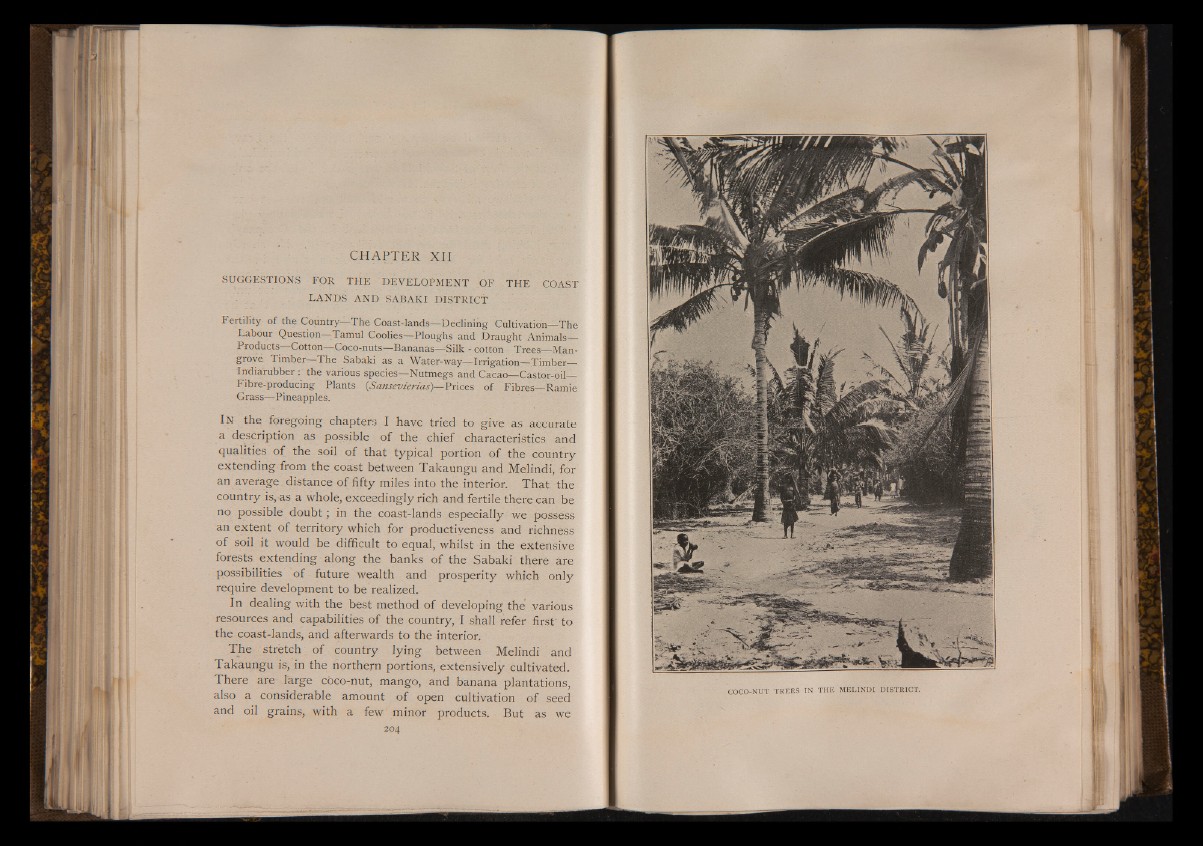
CH A P T ER XII
SUGGESTIONS FOR THE DEVELOPMENT OF THE COAST
LANDS AND SABAKI DISTRICT
Fertility of the Country— The Coast-Iands— Declining Cultivation— The
Labour Question Tamul Coolies—rPloughs and Draught .Animals—
Products— Cotton— Coco-nuts— Bananas— Silk - cotton Trees -Mangrove
Timber—The Sabaki as a Water-way—^Irrigation—-Timber—
Indiarubber : the various species— Nutmegs and Cacao— Castor-oil—
Fibre-producing Plants (Sansevierias)— Prices of Fibres— Ramie
Grass— Pineapples.
In the foregoing chapters I have tried to give as accurate
a description as possible of the chief characteristics and
qualities of the soil of that typical portion of the country
extending from the coast between Takaungu and Melindi, for
an average distance of fifty miles into the interior. That the
country is, as a whole, exceedingly rich and fertile there can be
no possible doubt; in the coast-lands especially we possess
an extent of territory which for productiveness and richness
of soil it would be difficult to equal, whilst in the extensive
forests extending along the banks of the Sabaki there are
possibilities of future wealth and prosperity which only
require development to be realized.
In dealing with the best method of developing the' various
resources and capabilities of the country, I shall refer first to
the coast-lands, and afterwards to the interior.
The stretch of country lying between Melindi and
Takaungu is, in the northern portions, extensively cultivated.
There are large coco-nut, mango, and banana plantations,
also a considerable amount of open cultivation of seed
and oil grains, with a few minor products. But as we
204